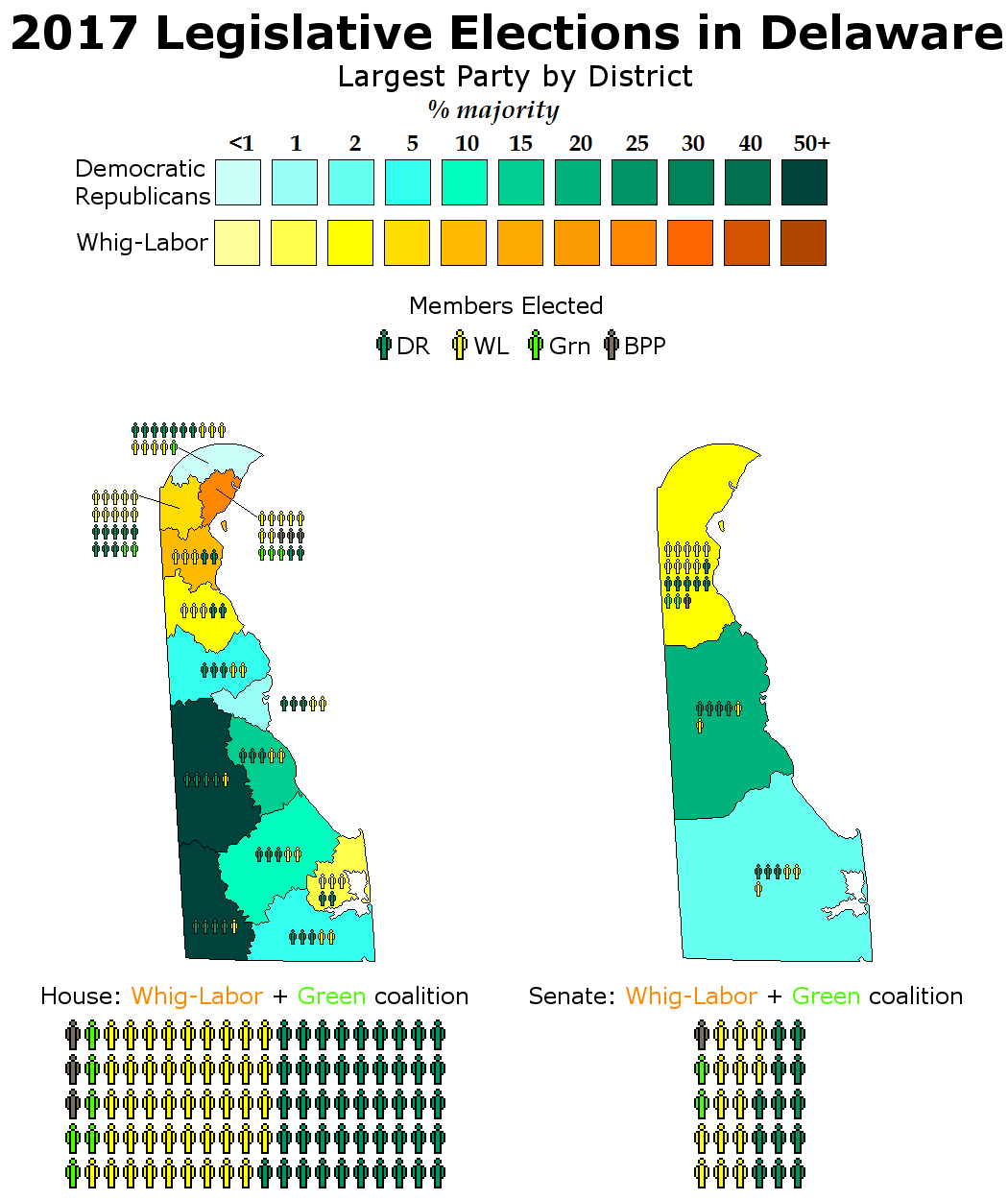This is the fifteenth installment in my alternate American election series.
Metropotamia
Alta California
North Carolina
New Jersey
Adams
Alabama
Rhode Island
Sequoyah
Assenisipia
East Florida
Tennessee
Kansas
Dakota
Arizona
Delaware is a small yet interesting state with its own two unique parties, Whig-Labor and the Democratic Republicans.
Whig-Labor was a combination of the Whig and Labor parties during the early 2000s. The Whig party was a centrist liberal party founded in 1973 by aspiring politician Biden who sought to restore order in the aftermath of the Conservative Revolution. While his party remained a minor force during the 1970s during the 1980s it begun to gain steam and after being the main opposition during the mid 80s it became the governing party in 1989. Charting a centrist approach forward the party remained in power until the creation of the Democratic Republicans in 1996 to form an united front against the hegemonic Whig party. This lead to the Whig coalition government of 1997 with Labor, which forced the Whigs to shift more to the left. Then after the Democratic Republicans won control of government in 2001 the decision to unite the two parties was made, leading to Whig-Labor shortly afterwards capturing the House in 2003 and the senate in 2005. Ever since the Whig-Labor has remained the governing party of Delaware, lead by the charismatic John Biden.
However following the election of 2016 Biden made a bombshell announcement when he announced he would be resigning after the end of his thirteenth term a scramble of internal power struggles occurred with the Whig-Labor party. While former treasurer Charles Markell emerged from the primaries as the party leader following the primaries the Democratic Republicans began launching negative campaign ads highlighting his participation in the bailing out of banking corporations at taxpayer's expense. With the Democratic Republicans predicted to retake both the House and Senate for the second time this millennia things looked grim for the Whigs.
Yet when the results came in the implausible occurred, by just one mere seat the Whig-Labor and Green parties possessed a 51 seat majority which proved enough to secure a stable government despite the Democratic Republicans technically being larger than Whig-Labor proper. This miraclous victory likely occurred due to a surge of young voters who had known the Whig party all their lives and did not want Delaware to follow a similar path to other states such as North Carolina or Pennsylvania which were swept up by the Democratic surge of 2016. Thus the Whig-Labor party chugged onwards in continuing its eternal technocratic government.
Government:
Whig-Labor - A combination of social democratic Labor and Biden's own centrist Whigs, the party can be described ideologically as left-leaning liberal. Favoring a technocratic rule of government with stablity as a number one priority its rule over Delaware has continued for decades on end and after its narrow victory in 2017 seems to have bought itself still more time.
Greens - The main left wing opposition to the Whigs, they grew from a meager two seats to formidable six in the election of 2017 and have now entered the state government of Delaware for the first time in the history. With a large set of bills from legalizing marijuana to large scale investments in solar power the Greens are sure to push the Whigs even more to the left.
Opposition:
Democratic Republicans - The main opposition party of Delaware formed specifically to stop the hegemony of the Whigs, they were part of government only from 2001 to 2003, though they almost captured control in 2017 as well. Nevertheless they hope that the Greens' influence in the governing coalition will force the government too far left and result in even more centrist voters switching over to the Democratic Republicans.
Black Panthers - The black nationalist mainly based in the inner cities of the Wilmington area, the increasing crime rate of the area and inability of the Whig government to do anything about it resulted in the Black Panthers gaining yet another seat in this election as well as a seat in the Senate of Delaware for the first time.


